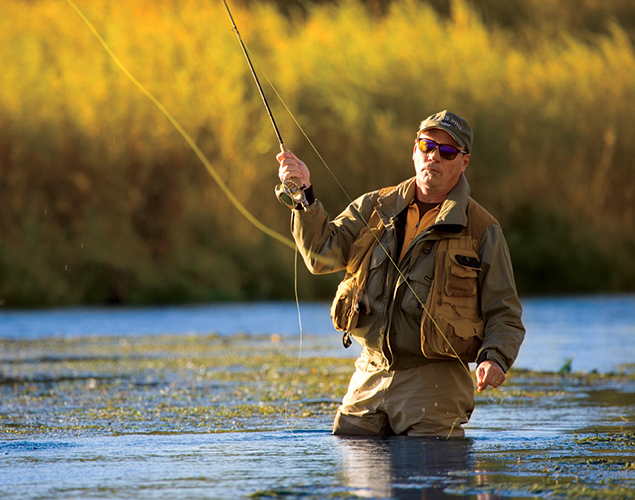
 Suckers are a freshwater species of fish that are normally found in rivers but also can be found in lakes. Suckers, by almost anybody's standards, won't be the most spectacular fish they have ever caught, but pound for pound they are one of the toughest fighting fish. Suckers — like their name communicates — have thick, fleshy lips, which allow them to root along the bottom in search of food. Suckers are not really fished with hopes of catching dinner but rather simply for the thrill of the fight.
Suckers are a freshwater species of fish that are normally found in rivers but also can be found in lakes. Suckers, by almost anybody's standards, won't be the most spectacular fish they have ever caught, but pound for pound they are one of the toughest fighting fish. Suckers — like their name communicates — have thick, fleshy lips, which allow them to root along the bottom in search of food. Suckers are not really fished with hopes of catching dinner but rather simply for the thrill of the fight.
If you are a fly fisherman in the Midwest, suckers have to be on your list of to-do's every spring. The sheer numbers of fish that migrate up the rivers and the size and toughness of the fish make these critters a fly angler's dream. The best part to fishing suckers is that you can in, most cases, just use your trout setup, as long as it is heavy duty enough!
Finding Fish
Suckers spawn in early spring in shallow, fast-flowing tributaries. If you think suckers are in a river you are hoping to fish, simply spend a few minutes watching the water and you will know if they really are there. While suckers spawn, they constantly move about the stream reach looking for the perfect spot. You will see them rolling, trashing and surfacing while they are moving around. If you don't see activity in the water then the fish probably are not there yet and you should look for another spot.
If you find a river that has active fish, taking a second to study the water is key. Look for lanes where the fast water flows meet slow water. Suckers will usually be located on the slow water side just adjacent to the fast water edge. Another good place is behind any kind of current break. These fish will stack up in the slack water behind a current break until they are ready to move again. Once you find fish, wade over to your location quietly. Suckers will spook when you get close to them but if you get to your spot and resist moving your feet too much on the river bottom, they will swim right up next to you.
Equipment Considerations
If you are a fly fisherman, you probably already have the equipment it takes to catch suckers. Because of the size and strength of suckers, rods in the 6- or 7-weight categories seem to work best. Large arbor reels are also a good idea since these fish will make long runs and you will have to take up lots of slack like fast. As far as leaders are concerned, a 7- to 9-foot 10 pound standard leader will do the trick.
Food/Flies
Suckers eat pretty much any insects, worms or snails that they can find on the river bottom. When deciding which fly to use, keep in mind what suckers eat. Nymph patterns, scuds and worm imitations will be your best bet, but anglers also have great success with egg flies as well. Since suckers are not overly aggressive feeders and have relatively small mouths, hook sizes for your flies should be 6 through 12. Make sure all the flies you use are not tied on thin wire hook shanks, as they will most certainly not withstand the punishment of a fighting sucker.
 |
| Casting upstream of the intended target allows the fly to sink to the bottom before it reaches the sucker fish. |
Smaller flies will be better for clean water conditions, while larger nymphs work best in muddier situations. A good idea is try and use a fly pattern that has some weight like a bead incorporated into its construction. These flies get to the bottom faster and stay where the fish are feeding giving you the best chance at hooking up.
Fishing Suckers
To fish suckers on a fly rod, you have to be patient. In some instances you have to place multiple casts to the same group of fish in order to get one to bite. A good place to start after you have located a river holding fish is to pick a potential fish holding run and position yourself so that you can quarter upstream cast to this run. You want to cast upstream of the intended target and allow your fly to sink to the bottom before it reaches the fish. Keeping you rod high will take up any slack line on the water or actively mending the line as it drifts will keep your fly drag free in the current. At any time during the drift if you see your indicator stop or go subsurface, set the hook and hold on tight.
Starting out the spring with a few suckers can be one of the best experiences a fly angler has all year. Whether you are an experienced fly fisherman or novice, these fun fish are a great way to break into a new season of fishing and tune up your skills.
- 11970 views

